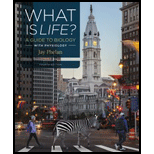
To review:
The three ways in which the immune system combats pathogens.
Introduction:
The immune system is said to have three lines of defense – physical, non-specific and specific.
Explanation of Solution
The immune system has levels at which it defends the body against pathogens.
Physical barriers make up the first level of defense, by preventing the pathogens from entering and establishing infection in the body. The skin, hair in the nose and ears, and the mucus membranes are examples of physical barriers. They also secrete some chemicals that stop the growth of pathogens.
Non-specific immunity refers to the immune cells that attack all foreign objects, without specifically attacking one type of pathogen. This type of defense is rapid and is seen in almost all multicellular organisms. This is also called innate immunity since we are born with it.
Specific immunity refers to the cells and molecules that recognize specific pathogens, remember them and attack them strongly when they re-enter the body. This is slow to activate, but offers the best protection once activated. This is also called adaptive immunity.
Physical barriers are the surfaces such as the skin, hair and the mucus membranes, that prevent the entry of pathogens into the body. Non-specific immunity refers to the immune cells that recognize any foreign object and attack it rapidly, without being specific to one pathogen. Specific immunity refers to the immune cells and molecules that recognize and fight off specific pathogens, that the body has been previously exposed to.
Want to see more full solutions like this?
Chapter 27 Solutions
What Is Life? A Guide to Biology with Physiology
- Distinguish between a. neutrophil and macrophage b. cytotoxic T cell and natural killer cell c. effector cell and memory cell d. antigen and antibodyarrow_forwardWhat is the difference between innate immunity and adaptive immunity?arrow_forwardMatch the immunity concepts: __________ inflammation __________ antibody secretion __________ phagocyte __________ immunological memory __________ vaccination __________ allergy a. neutrophil b. plasma cell c. nonspecific response d. purposely causing memory cell production e. basis of secondary immune response f. nonprotective immune responsearrow_forward
- How, in general, do antibody-mediated and cell-mediated immune responses help clear the body of antigens?arrow_forwardThe fact that the body does not normally mount an immune response to the molecules in food is an example of _______ . a. secondary immune response b. immunological memory c. immune tolerance d. passive immunityarrow_forwardThe Adaptive Immune Response Is a Specific Defense Against Infection Identify the components of cellular immunity, and define their roles in the immune response.arrow_forward
 Biology: The Dynamic Science (MindTap Course List)BiologyISBN:9781305389892Author:Peter J. Russell, Paul E. Hertz, Beverly McMillanPublisher:Cengage Learning
Biology: The Dynamic Science (MindTap Course List)BiologyISBN:9781305389892Author:Peter J. Russell, Paul E. Hertz, Beverly McMillanPublisher:Cengage Learning Medical Terminology for Health Professions, Spira...Health & NutritionISBN:9781305634350Author:Ann Ehrlich, Carol L. Schroeder, Laura Ehrlich, Katrina A. SchroederPublisher:Cengage Learning
Medical Terminology for Health Professions, Spira...Health & NutritionISBN:9781305634350Author:Ann Ehrlich, Carol L. Schroeder, Laura Ehrlich, Katrina A. SchroederPublisher:Cengage Learning Human Biology (MindTap Course List)BiologyISBN:9781305112100Author:Cecie Starr, Beverly McMillanPublisher:Cengage Learning
Human Biology (MindTap Course List)BiologyISBN:9781305112100Author:Cecie Starr, Beverly McMillanPublisher:Cengage Learning Human Physiology: From Cells to Systems (MindTap ...BiologyISBN:9781285866932Author:Lauralee SherwoodPublisher:Cengage Learning
Human Physiology: From Cells to Systems (MindTap ...BiologyISBN:9781285866932Author:Lauralee SherwoodPublisher:Cengage Learning Concepts of BiologyBiologyISBN:9781938168116Author:Samantha Fowler, Rebecca Roush, James WisePublisher:OpenStax College
Concepts of BiologyBiologyISBN:9781938168116Author:Samantha Fowler, Rebecca Roush, James WisePublisher:OpenStax College





